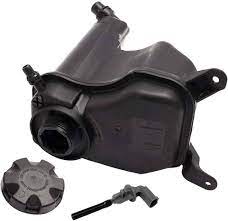Description :
The term "car reservoir" is not specific enough to provide a detailed description without additional context. However, I can provide information on two common types of reservoirs associated with cars: the used brake fluid reservoir and the used coolant reservoir.
1. *Used Brake Fluid Reservoir:*
- *Location:* Typically located near the brake master cylinder, often on the driver's side of the engine compartment.
- *Purpose:* It holds brake fluid, which is a crucial component in the hydraulic brake system. Brake fluid transmits force from the brake pedal to the brake components, allowing for effective braking.
- *Design:* The reservoir is usually a transparent plastic or translucent container with minimum and maximum level markings for easy fluid level inspection.
- *Maintenance:* It's important to regularly check the brake fluid level and ensure it stays within the recommended range. Additionally, the fluid should be replaced according to the vehicle manufacturer's guidelines.
2. *Used Coolant Reservoir:*
- *Location:* Typically located near the radiator or in the engine compartment.
- *Purpose:* Also known as the overflow tank or expansion tank, it holds excess coolant. As the engine heats up, coolant expands, and the excess flows into the reservoir. When the engine cools down, coolant is drawn back into the system to maintain the proper level.
- *Design:* The reservoir is often a translucent plastic container with level markings. It may have a hose connecting it to the radiator for the transfer of coolant.
- *Maintenance:* Regularly check the coolant level in the reservoir when the engine is cool. If the level is consistently low, it may indicate a coolant leak that needs attention.
In both cases, the reservoirs play a crucial role in maintaining the proper functioning of the associated systems, and regular inspection as part of routine vehicle maintenance is essential. Always refer to the vehicle's manual for specific information related to your car's reservoirs and their maintenance.


